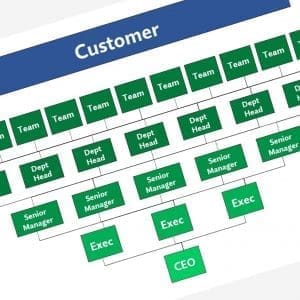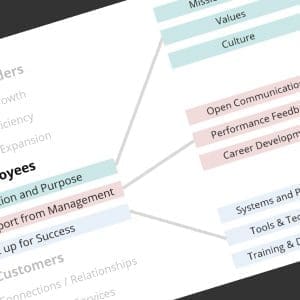I still get interesting, unsolicited pings from the meebo widget on my blog site. I’ve got a Pidgin plugin that connects to meebo, so when it says I’m available, I am definitely at the keyboard, hacking away at something – and usually able to answer the quick message. Still, sometimes I’m amazed at the depth and detail of the inquiries.
Last week, I got into an interesting conversation with someone about MS Project interview questions. At first, I thought they were the hiring manager, looking for some material for their incoming candidates. Later, I found that this was a candidate, anticipating questions on their depth of knowledge in using the popular gantt-generator. Points awarded for being proactive! (note – he sent me his resume, so if you are looking for someone good, let me know …)
I have published interview questions in the past, and have written/compiled sample questions for a number of programming languages – but I’ve never seen a decent check to validate if that incoming job candidate has some “chops” in MS Project. It would be a pretty handy thing to have – if a position requires experience with complex projects, such skills would be prima facie evidence that they can deal with complexity and rigor. Of course, it’s not a direct indicator of their soft skills, but that’s another conversation …
So, I sent a request off to Andy Kiss, a colleague who has excellent PM and MS Project experience, and added his ideas to a quick eMail I threw together for my web-IM connection. Below, I’ve fleshed the Q&A out a bit, for your consideration.
As I created these sample questions, I noted many areas that do not necessarily have right/wrong answers. There is a certain art along with the science, and any experienced PM will have some (preferably strong) opinions about what works and what doesn’t. You aren’t testing for a specific skill level as much as a solid understanding of the theory and fundamentals, and war stories showing how they have applied these skills and made MS Project work for them.
Do you have a sample project plan you can walk me through?
- Before they come in for the interview, see if the candidate can bring along a sample of their work. Ask them to bring in a paper copy, explaining that this should alleviate any concerns about distributing confidential or proprietary information in electronic format (they can keep the samples when they leave). Actually, you need to take a look at how they present a complex project in a relevant yet informational way (since review meetings with stakeholders typically take place over paper copies). How good of a communicator are they?
How do you add or delete a standard or custom column/field?
- A bit of a trick question: there are many ways to add (or insert) a column/field, typically they will brute force Insert or use a macro. You should never delete a column/field that contains data; recommended approach is to hide the column.Interviewer could drill in to the candidate’s use of custom tables, views, fields, and filters. Have they set up templates? How do they manage consistency among multiple projects? Do they use automation or templates to develop standards and make incremental improvements for each project they work on?
Why would you embed contractor time within a Project plan? How do you do it, and where do you get the quickest information relative to contractor costs?
- There are multiple reasons for contractor time, the most obvious would be the need to account for all tasks and dependencies. The candidate should also come up with a rationale around capturing cost – they need to demonstrate a focus on schedule and budget. It’s also interesting to see where in the project proposal process they bring in high-level Project plans, with resource-loaded tasks and time lines, to develop initial estimates for the inevitable cost/benefit conversations.Specifically, to get this done, you need to add contractor cost per hour on the Resource Sheet. Costs could be a blended rate (for High / Medium / Low skilled tasks) or specific rates for known resources. The candidate should be able to speak intelligently on how and why to create a blended rate – averaging hourly costs for full-time employees and contractors, the total project budget (when approved) gives you the flexibility (ie. the budget) to bring in external contractors when internal resources are occupied with other work.
How do you best embed resource availability within your plan?
- Use a Standard calendar, noting non-working time for all resources. Then, embed out-of-office for specific individuals as needed. If you skip this step, you risk creating an inaccurate schedule, by hampering Project’s ability to extrapolate accurate future dates.You can sneak into a soft skills conversation here, by talking about the requisite negotiations for resource time within the business (I already have a full time job … no time to work on this …)
How do you model meetings and non-working time in a project plan?
- There are a number of different methods – including …
- Model all resource participation at 80% available time
- Change the default calendar to 6 hour work days
- Create weekly, 5-day (duration) tasks, for 1-4 (effort) hours per week, and assign everybody to this task
Candidate should be able to talk about the pros and cons of whatever method they select.
How would you best configure the critical path to be very obvious within your plan?
- Format – Text Style – Item to Change; Select Critical Path and adjust color to Red or something else equally eye catching. Extra points awarded if the candidate is sensitive to the typical lack of color printers in many organizations – how does your Red come out now, hmmm?Here’s another opportunity to move into a soft skills conversation, with war stories about significant critical path moments in past projects, or discussing how to explain critical path to the project team.
Explain how Earned Value fields are used to compute Schedule Variance – and why this is important.
- Schedule Variance (SV) = Budgeted Cost of Work Performed (BCWP) – Scheduled (BCWS)Cost Variance (CV) = Budgeted (BCWP) – Actual (ACWP) Cost of Work Performed
Project Earned Value is a simple concept (are we ahead of schedule? Budget?), but most folks don’t use it. It’s an indicator of how good the candidate is at tracking an active project (as opposed to just using MS Project as an estimator / high-level planner).
Can MS Project be used to track an agile development project, and if so, how?
- There is no right answer to this question, I’ve heard opinions on both sides. However, if someone can give a cogent, detailed answer either way, they are demonstrating their knowledge of agile and/or Project
What are your favorite MS Project books / web sites?
- Project planning, estimating, tracking, and communication are possibly the most complex, nuanced area that Microsoft’s family of Office-related applications hopes to support. Experienced, professional PMs should be actively looking to expand their skill sets with a variety of resources.
Have you done any VBA automation with MS Project?
- This is not as common as Excel programming, but it might give some insight into their depth of understanding of the Project “database”. Some folks automate look/feel issues, so printouts always look the same (consistency breeds familiarity). Other uses macros for particularly tricky utilization or costing calculations. The candidate should be able to glibly describe the benefits and challenges of automation with this tool.
I welcome comments / feedback on this list! If/when I get a decent number, I’ll put together a nice little interview guide, suitable for download and re-use.





Comments (4)
Very good information and if possible supply few more typical and imp questions related to project planning, managemet and etc
Thanks,
Madhu
When you go to a job interview, you expect them to ask you questions, but more often than not, they will turn the tables on you and finish the interview by asking if you have any questions you’d like to ask them. What they’re looking for here is to see whether or not you care enough about the job to get clarification on the position and company you’re joining. Impress your interviewer by asking a couple of our sample concluding job interview questions.
Hi There,
a Gantt chart scheduled for 100 days. Now, I am asked for reducing it in 50 days through “Must Finish on” and “Must Start on” features. Could you please advise how? or other options?
Regards
Apologies, Kami, but I do not know how to answer your questions succinctly.